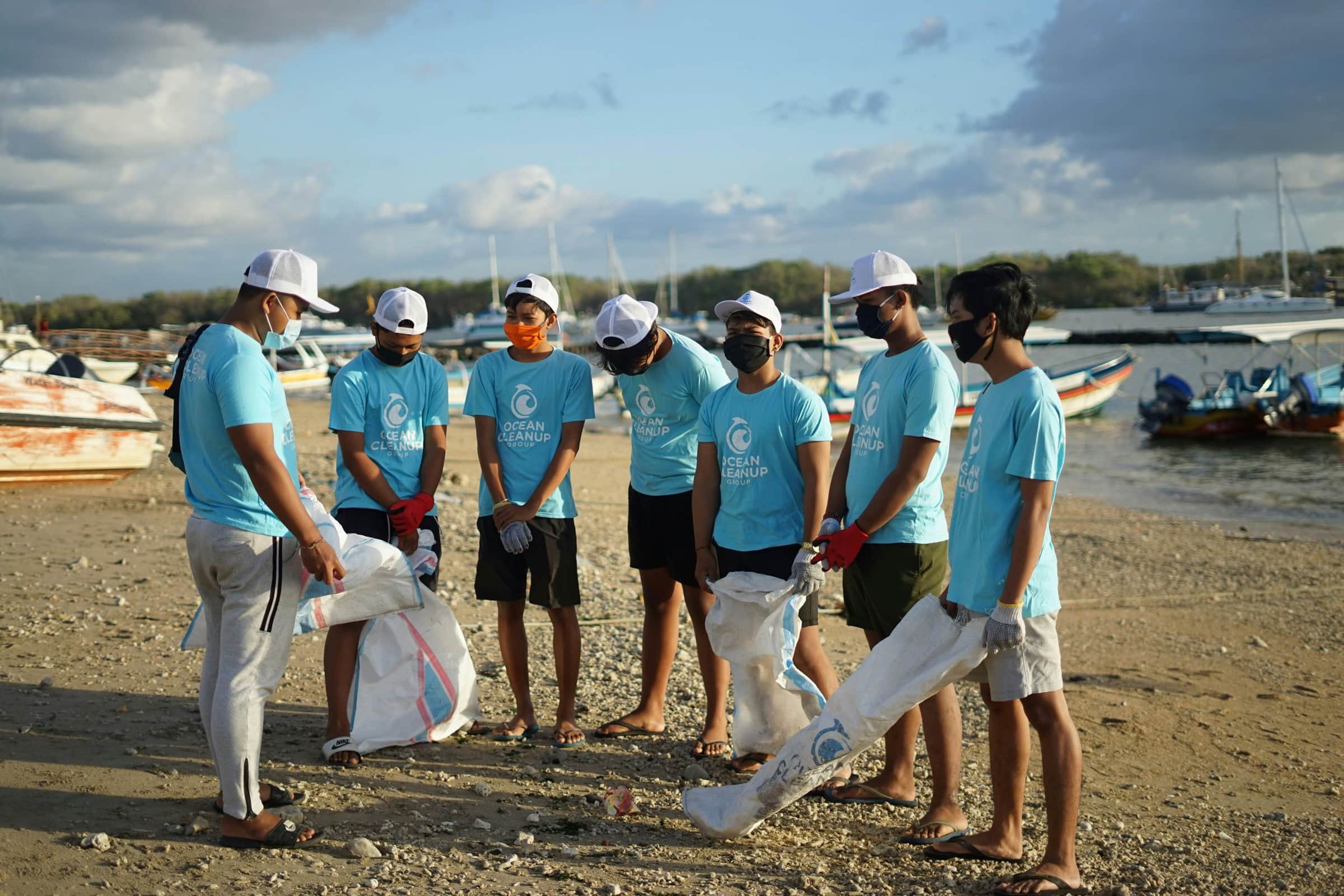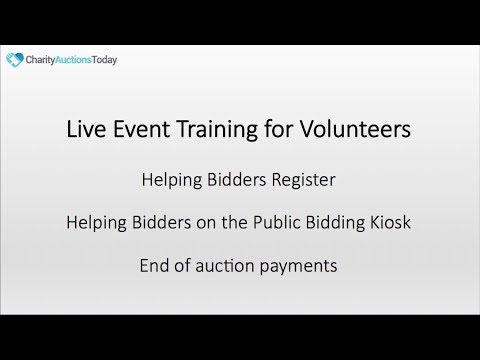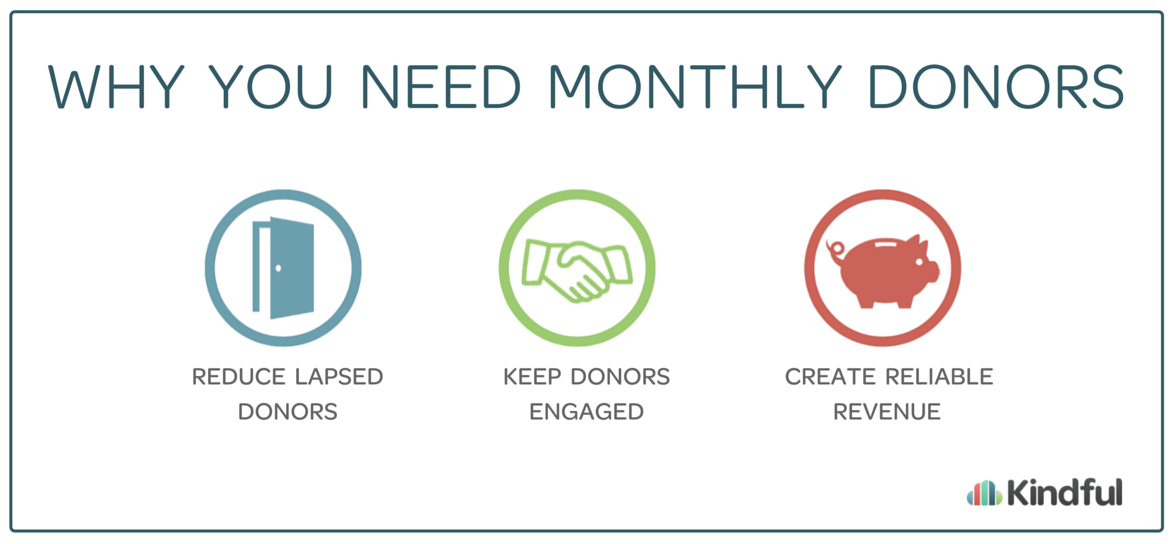Volunteer Recruitment and Retention
Depending on your nonprofit's field, you may need to thoroughly vet your volunteers with background checks and other fail safes. This can help ensure that your volunteers are safe to be around as well as well-suited to their duties with your organization.
Alternatively, your needs might be much more casual, and you simply need to hold a volunteer orientation where you explain the gig and your expectations. This means, however, that you might sometimes encounter duds. In smaller communities, ask churches if you can post volunteer positions and ask for recommendations from a church member.
Volunteers Help — But Bidders Fuel Your Mission
You know how to recruit, onboard, and retain volunteers. Now multiply their impact — launch your auction so supporters become participants, not just spectators.
Launch Your Volunteer-Powered AuctionDoes it sound like volunteers might not be worth your time? We promise they are. Studies show that volunteers will also donate more to the cause they belong to. Moreover, strict nonprofit budgets mean that volunteers are a necessity to many organizations. Embrace this workforce: even if it means some more upfront management, it's still free help for your mission.
Knowing that good volunteers can be hard to find, you should also look into how to keep them. Below we outline some tactics on how to find volunteers and keep them.
The Importance of Job Descriptions
The first or second thing a potential volunteer sees related to your organization is the job description.
Make it Clear
It's good to have a clear definition of the volunteer positions you're seeking to fill. Next, consider the skills and experience you'd prefer your target volunteers to hold. Create volunteer position descriptions written in a tone that resonates with the target audience. For example, use a different style in a volunteer position description aimed at a college-age volunteer than you would for one aimed at a senior citizen. The job description must be clear so the potential volunteer can understand it and determine if her skills fit the position. If it's unclear, you risk not only not finding volunteers with relevant skills, but also keeping them long term.
It's helpful if you can develop a compelling headline or slogan that will resonate with potential volunteers and encourage them to get involved—something like, "Volunteer! Come for fun. Stay for the difference you make in others' lives." Of course, you can use this thought process to create your fundraiser's name too.
Make it Easy to Apply
The easier it is for people to volunteer, the more likely they are to do it. Make sure your website is easy to navigate and that your volunteer application process is simple and straightforward.
Why Well-Planned Onboarding Is Critical
You put quite a bit of effort into hiring that new volunteer yesterday. First, you provided clarity on the job description and discussed expectations. The next step is onboarding.
Define Your Needs and Expectations
Are you hiring volunteers to help with a fundraiser or to volunteer year-round? Either commitment requires a good way for the volunteer to learn what's expected in the position and understand the behavior needed to perform the position as stated in the job description. Being taught how to do the job by caring, knowledgeable people is key.
Volunteers Want Onboarding & Training for Success
Having resources available for volunteers to refer to is important. Depending on whether the position is for a one-off event or year-round will determine what type of onboarding manual or document you will create for the volunteers. Once you've recruited volunteers, it's important to provide them with the support they need to be successful. This includes providing them with training, resources, and opportunities to connect with other volunteers. Volunteers want structure so they understand the scope of their position.
Use a Variety of Recruitment Channels

Some organizations are timid when it comes to learning how to get volunteers, but it's actually one of the easiest steps in fundraising.
Use Personal Networks
Take advantage of having everyone involved send a recruiting email to their personal contacts—it's a great way to start the process. And same thing for social media—have everyone post the same recruitment content on their personal Facebook pages (not a paid ad, but an image with words). Social media will be a huge help as you test what works best on how to get volunteers.
Broaden Your Reach
Don't just rely on one or two methods to reach potential volunteers. Use a as many channels as possible, such as your website, social media, email, and word-of-mouth, press releases, and speaking opportunities to spread the word about your volunteer program. Flyers and posters work well too. If you're recruiting high school age volunteers, ask the principal if you can speak to the seniors or add a blurb in their bulletin or website. Contact local media, especially morning feel-good local TV shows where you can announce your fundraiser, discuss your mission and talk about volunteer positions!
Celebrate Volunteer Accomplishments
Volunteers are giving their time and energy to help your organization succeed. It's important to show your appreciation for their efforts by celebrating their accomplishments. This could involve anything from sending a thank-you note to hosting a volunteer appreciation event. By following these tips, you can attract and keep volunteers who are passionate about your organization's mission and who are committed to making a difference.
PRO TIPS: How to get volunteers and keep them:
Be flexible with your volunteer hours and requirements.
Not everyone can commit to the same amount of time or work the same hours. Be flexible with your requirements so that more people can participate.
Offer a variety of volunteer opportunities.
Not everyone has the same skills or interests. Offer a variety of volunteer opportunities so that people can find something that's a good fit for them.
Provide training and support.
Make sure your volunteers have the training and support they need to be successful. This could include providing them with materials, training, or mentorship.
Recognize and appreciate your volunteers.
Let your volunteers know how much you appreciate their hard work. This could be done through thank-you notes, public recognition, or other forms of appreciation.
By following these tips, you can build a strong volunteer program that will help your nonprofit achieve its goals.
One last thought about how to get volunteers:
Remember that you never stop thinking about how to get volunteers! You may have the most wonderful volunteer army for your current project but what about your next project in six months? You'll still be thinking about how to get volunteers.
When a fundraiser is over, don't forget to ask your current volunteers if they can help next time. Then begin your email campaign to gently draw them back in to help. Love your volunteers!
What Incentives Can a Nonprofit Give to Volunteers?

Show your volunteers the love! Some of the most common incentives include:
- Thank-you notes and cards (personal and sincere go a long way to a volunteer's heart)
- Volunteer appreciation events
- Volunteer recognition awards
- Discounts on merchandise or services
- Opportunities for professional development
- Opportunities to network with other volunteers
- Opportunities to learn new skills
- A sense of accomplishment
- The satisfaction of knowing that they are making a difference
- Social media shout-outs
The best incentives for your nonprofit will depend on the needs and interests of your volunteers. It is important to offer a variety of incentives so that there is something for everyone. It is also important to remember that not all volunteers are motivated by the same things. Some volunteers are motivated by the intrinsic rewards of volunteering, such as the satisfaction of helping others and making a difference in the community. Other volunteers are motivated by extrinsic rewards, such as discounts, recognition, or opportunities for professional development.
The best way to determine what incentives will be most effective for your volunteers is to ask them! Survey your volunteers to find out what they are looking for in a volunteer experience. You can also use social media or other online platforms to get feedback from your volunteers. By offering a variety of incentives and listening to the needs of your volunteers, you can create a volunteer program that is both rewarding and sustainable.
What Demographic Makes the Best Nonprofit Volunteer?
There is no one-size-fits-all answer to this question, as the best demographic for nonprofit volunteering will vary depending on the specific needs of the organization. However, these general demographic trends are certainly in the right direction of how to get volunteers that fit your nonprofit well:
- Age: People of all ages can be great volunteers, but some organizations may find that they have a particular need for volunteers in certain age groups. For example, organizations that work with children may need volunteers who are able to relate to and work with young people. Seniors are terrific volunteers, as they have more time to contribute and are well adapted to working with all types of people.
- Education: Volunteers with a higher level of education may be more likely to have the skills and experience that are needed for certain volunteer roles. For example, organizations that provide legal services may need volunteers with a law degree.
- Occupation: Some occupations may provide volunteers with skills and experience that are particularly valuable for nonprofit work. For example, volunteers with a background in healthcare may be well-suited for roles that involve providing care for people in need.
- Interests: Volunteers who are passionate about a particular cause are more likely to be motivated and engaged in their volunteer work. For example, volunteers who are passionate about animal welfare may be more likely to volunteer at an animal shelter.
- Availability: Volunteers who have the time to commit to regular volunteer hours are more likely to be able to make a significant impact. For example, organizations that provide after-school programs may need volunteers who are available to work during the afternoon and evening hours.
Ultimately, the best way to determine the best demographic for nonprofit volunteering is to consider the specific needs of your organization and to recruit volunteers who are passionate about your cause and who have the skills and experience that are needed to make a difference.
Frequently Asked Questions
What is the simplest way to attract more volunteers fast?
Lead with a clear, specific promise: what the task is, why it matters, and how long it takes. Example: “Pack 100 weekend meal kits in 90 minutes. Saturday 10–11:30 AM.” Specific jobs convert better than vague “volunteer with us” messages.
Where should we recruit volunteers first for quick wins?
- Your donors and newsletter subscribers (warmest audience).
- Partner schools, faith communities, and civic clubs.
- Employers offering volunteer time off (VTO) or group days.
- Event attendees and past volunteers—invite them back.
How do we design roles so more people say “yes”?
- Offer micro-shifts (1–2 hours) and remote options.
- Write one-page role cards: purpose, tasks, time, location.
- Define success (e.g., “assemble 50 kits,” “call 20 donors”).
What should our volunteer ask or social post include to convert?
- A results-focused headline (the impact/hour).
- Date, time, location, and accessibility notes.
- Exact tasks + training provided + who to contact.
- One tap-to-sign-up link or QR (no multi-step maze).
What should a great volunteer onboarding include?
- Welcome email with mission snapshot and logistics.
- Short training video or job aid (5–10 minutes).
- Clear point of contact and how to change shifts.
- What recognition looks like (badges, shout-outs, letters).
How do we reduce no-shows with scheduling and reminders? (General information)
- Send instant confirmations and calendar invites.
- Automate reminders at 72h and 24h; include location and parking.
- Allow easy self-service swaps/cancellations and waitlists.
General information only.
Do we need background checks or waivers? (General information)
It depends on the role and local requirements—positions with youth, seniors, or finances often require checks, references, and signed policies. Consult your organization’s guidelines. General information, not legal advice.
How do we host youth or corporate group volunteers smoothly? (General information)
- Create age-appropriate tasks and ratios; require chaperones as needed.
- For companies, provide a 90-minute team project with impact stats.
- Share photo guidelines and safety briefings up front.
General information only.
What makes a volunteer’s first day great so they return?
- Warm greeting and name tags; introduce to a buddy.
- 5-minute huddle: goals, safety, and where supplies are.
- Quick win task, then a visible progress update before they leave.
How do we recognize volunteers without a big budget?
Use frequent, specific praise, milestone shout-outs, handwritten notes, recommendation letters, and small perks (snacks, parking). Publish impact spotlights with photos and quotes.
How do we gather and act on volunteer feedback? (General information)
- Two-minute post-shift survey (what worked/what to fix).
- Quarterly pulse on training, tools, and leadership.
- Close the loop: share changes you made because of their input.
General information only.
How do we prevent volunteer burnout and drop-off? (General information)
- Offer flexible shifts and rotate tasks; protect days off around big events.
- Encourage breaks; provide water and snacks.
- Set realistic goals and celebrate progress, not just perfection.
General information only.
What’s a good communication cadence to keep volunteers engaged? (General information)
Monthly newsletter, weekly shift digest for active roles, and day-before texts for those scheduled. Keep messages short with one clear CTA and respect communication preferences. General information, not legal advice.
How can we retain top volunteers longer-term?
Offer skills-based roles, cross-training, “lead volunteer” positions, and project ownership. Invite them to help improve processes and mentor new volunteers.
What volunteer data should we track to improve retention? (General information)
- Contact info, skills/interests, shift history, and hours.
- Recognition milestones and notes on preferences.
- Opt-in/consent for email/SMS and communication history.
General information only.
Which policies should every volunteer acknowledge? (General information)
Code of conduct, confidentiality, photo/communications guidelines, safety/emergency procedures, and incident reporting. Reconfirm annually and at major role changes. General information, not legal advice.
How do we re-engage volunteers who’ve gone quiet? (General information)
- Send a personal note: thank them, share impact, and offer two easy shifts.
- Invite them to a short “welcome back” orientation.
- Ask what would make volunteering easier next time.
General information only.
How do we convert one-time group volunteers into regulars?
Capture individual emails at check-in, send a 24–48 hour thank-you with photos and impact, and include 1–2 solo shift invitations tailored to their interests.
How do we make volunteering more inclusive and accessible? (General information)
- Offer varied shift times and both seated/standing roles.
- Provide plain-language materials and large-print signage.
- Ask about accommodations during signup and honor preferences.
General information, not legal advice.
Do you have a quick-start checklist to get and keep volunteers?
- Draft 3 role cards with micro-shifts and clear outcomes.
- Publish a one-click signup (QR + short link) and post everywhere.
- Automate confirmations/reminders; assign a shift lead.
- Deliver a great first day: buddy, huddle, quick win, thank-you.
- Track hours, recognize milestones, and survey after each shift.
💡 Try this in ChatGPT
- Summarize the article "How to Get Volunteers and Keep Them" from https://ghost.charityauctionstoday.com/p/how-to-get-volunteers-and-keep-them/ in 3 bullet points for a board update.
- Turn the article "How to Get Volunteers and Keep Them" (https://ghost.charityauctionstoday.com/p/how-to-get-volunteers-and-keep-them/) into a 60-second talking script with one example and one CTA.
- Extract 5 SEO keywords and 3 internal link ideas from "How to Get Volunteers and Keep Them": https://ghost.charityauctionstoday.com/p/how-to-get-volunteers-and-keep-them/.
- Create 3 tweet ideas and a LinkedIn post that expand on this Volunteers topic using the article at https://ghost.charityauctionstoday.com/p/how-to-get-volunteers-and-keep-them/.
Tip: Paste the whole prompt (with the URL) so the AI can fetch context.
Tom Kelly
Tom Kelly, TEDx speaker and CEO of CharityAuctions.com, helps nonprofits raise millions through auctions and AI. He hosts The Million Dollar Nonprofit podcast and inspires leaders to live their legacy, not just leave it.
Table of contents
Create Your Auction
Raise 40% more with smart bidding tools






